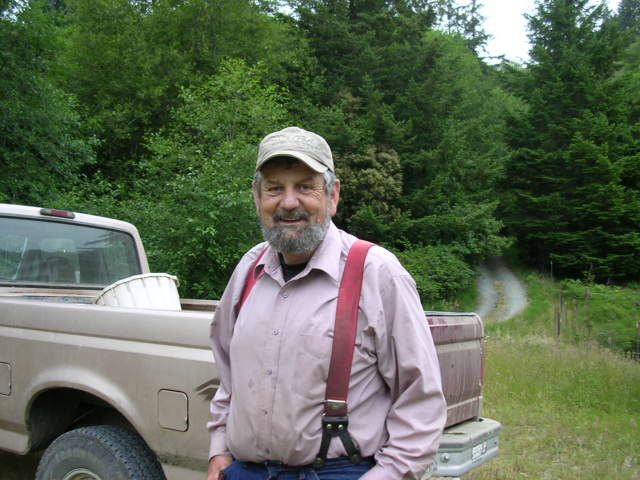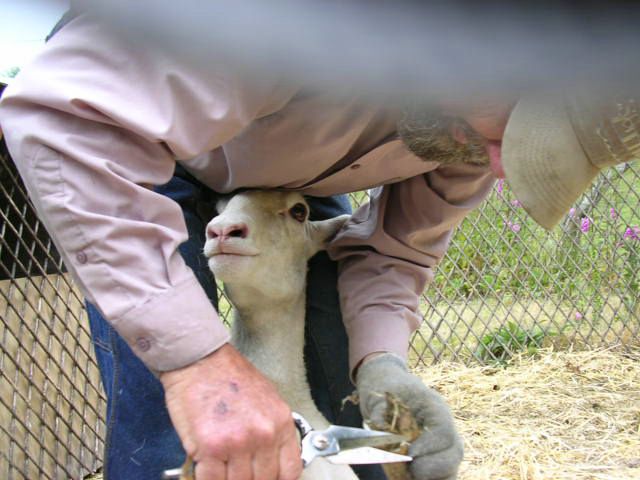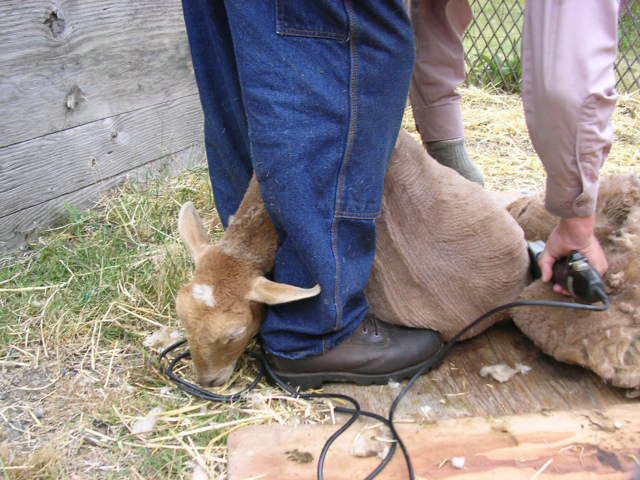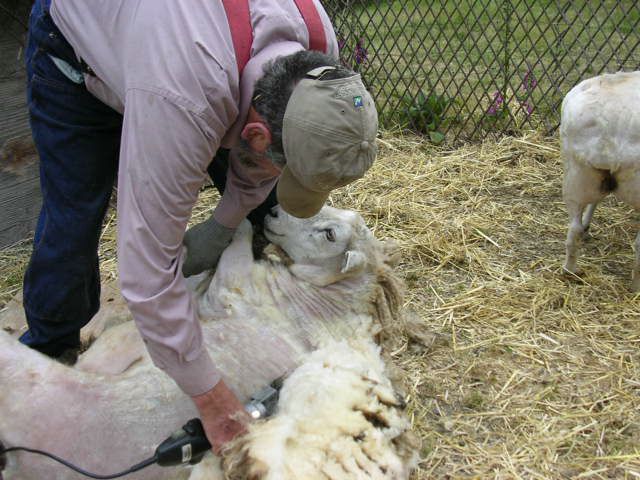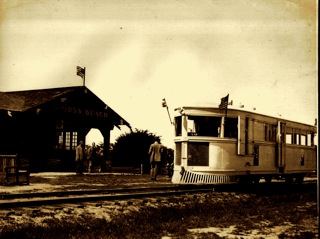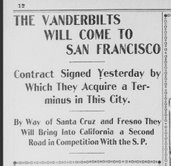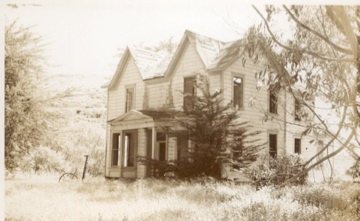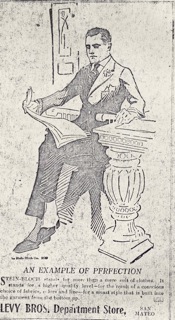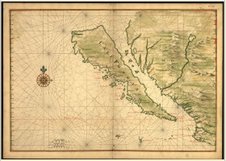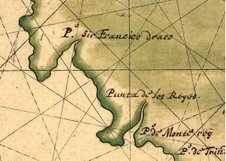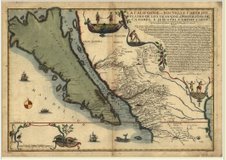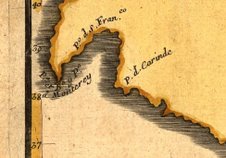An old-new story by June Morrall
Other than their mutual interest in the 1890s Coastside newspaper business, Robert Israel Knapp and Roma T. Jackson had little in common. The older of the two, “R.I.” Knapp, was a militant teetotaler, a well-known Half Moon Bay sidehill plow inventor, with a small factory on Main Street, while Jackson, the newcomer, was a brilliant editor and no enemy of the “demon rum.”
It was the promise of a railroad linking San Francisco with the isolated Coastside—and the impact of this event—that brought the 22-year-old Jackson and wife, Francis, to Half Moon Bay. There, they founded the “Coast Advocate” in 1890.
When the first issue of the “Advocate” appeared, Jackson’s admirers cheered. “It is a neat, spicy little stranger for which we hope a long and prosperous future,” wrote the “Redwood City Tribune.”
Jackson’s compelling writing style became evident in an April 1891 piece relating a Sunday afternoon carriage ride into the famous Purissima Canyon, greatly admired for its waterfalls and giant redwood trees:
“At one o’clock, an appetizing lunch was spread on a mammoth stump beneath the towering redwood, whose waving foliage far overhead added a darker luster to the sparkle of the Champagne.”
One year later, Knapp, who possessed no special writing skills, launched the “Monthly Messenger,” designed to raise the Coastside’s standards of morality. With a printing press set up inside Knapp’s Main Street plow factory,the “Messenger” was published in the interests of Christianity and gospel temperance.
“We have something to say, and we intend saying it, publishing it not for financial profit but because we deem it necessary to be said,” vowed the editor Reverend Meese, Knapp’s son-in-law, who took his turn at the paper’s helm.
Months passed and the Half Moon Bay community was startled to learn that Roma T. Jackson had sold to “Coast Advocate” to Robert Knapp!
“The sale will no doubt change the tone of the ‘Advocate,’” ruminated observers, “as Mr.Knapp is a pronounced prohibitionist.
At that juncture, Roma and Francis Jackson may have traveled to to Southern California where Jackson founded a newspaper in Cabria, another isolated community awaiting the coming of the railroad.
After the sale, the “Advocate” editorship was turned over to physician-surgeon and medical columnist, Dr. W. V. Grimes—but his tenure was short and a man called Frank Owen soon replaced Grimes.
“While it is regretted the recent editor found himself not in touch with the people,” noted the “Redwood City Democrat,” it is hoped the new one will be more successful. The coast is able and ought to support a home paper.”
Following Frank Owen, George P. Schaeffer took over the “Advocate’s” editorship in 1897. The Schaeffer’s took their turn in the limelight when they played host to Captain Thomas Peabody and his family after the ill-fated iron ship “New York” was stranded at the foot of Half Moon Bay’s Kelly Avenue in March, 1898.
A year later the Schaeffers welcomed Francis Jackson and her children into their home. Eight years had passed since her husband, Roma, sold the “Advocate” to Robert Knapp.
“It is her intention to assist the ‘Advocate’ staff,” wrote the “Redwood City Democrat.” “Mr. Jackson is seeking a fortune in the mines of Arizona. We are glad to welcome the Jackson family among us again and are only sorry Roma T. Jackson cannot be one of us.”
Moss Beach-born writer Peter B. Kyne—a future author of national stature, whose books were best sellers and made into movies—had been penning “snappy items for the ‘Local Brevities’ column of the ‘Coast Advocate, circulation 247’”, when he volunteered to serve in the Spanish-American War, serving in the Philippines.
In 1957 Kyne recalled that each week he “faithfully sent the [Coast Advocate] editor a 2,000-word mailed story, so he wouldn’t be embarrassed by gaping holes in his paper the day the paper went to press.
“He [George Schaeffer] ran my stories under a three-column head on page one with a break-over to page two. The head was labeled, “Philippine Paragraphs,” and raised his circulation to nearly 1,700 in 14 months. Writing those 2,000 words was often a chore in active service but the editor was my friend and I never failed him, and I admit that here I first started writing fiction. But who was to prove it?”
In 1900, Roma T. Jackson reappeared on the Coastside, this time as editor of the “Peninsula Pennant,” a seven-column weekly espousing Democratic politics. The “Pennant” reported the dedication of the new 26-foot-wide Pilarcitos Creek bridge, which replaced the old wooden one at the northern end of Half Moon Bay. This was known as the “world’s first steel-reinforced concrete structure.”
The “Advocate” merged with Jackson’s “Pennant” in 1901.
Talented as Jackson was, he could not control his dark moods. After celebrating the New Year in 1903, still waiting for a railroad, the 35-year-old editor was found dead in his Half Moon Bay home. Some locals suspected suicide.
A year later 71-year-old plow manufacturer R.I. Knapp passed away and heirs took over publication of the newspaper.
Jackson’s wife, Francis, filled in for her husband at the “Pennant-Advocate” until she was succeeded by Lester A. Skidmore.
Promoting the promise of the Coastside even before the railroad’s arrival, Skidmore reported: “Quite a crowd of people were at the wharf [Amesport at Miramar Beach] to see the new passenger steamer, “Newport,” which made her initial trip to Half Moon Bay Sunday. She has ample room for all kinds of traffic that the Coastside can furnish….”
While the on-again, off-again relationship between Knapp and Jackson played itself out, one Harry Griffiths established the “Half Moon Bay Review” in 1898, according to Roy Cloud’s “History of San Mateo County,” published in 1928.
More than 20 years earlier the Ocean Shore Railroad was finally laying track near Devil’s Slide when the 1906 San Francisco earthquake and fire struck, sending rails and equipment plummeting into the cold Pacific Ocean. The tremors were felt in the offices of both newspapers, the “Advocate” and the “Half Moon Bay Review.”
“…the worst mix-ups were in the newspaper office,” wrote the “Advocate’s” H.G. Copeland. “All eight pages of the “Review” were pied beyond redemption and type was thrown promiscuously about the office. Two forms of the “Advocate” were pied and one rack of job type was turned over and the type, about a washtub full, had to be picked up with a scoop scovel.”
The earthquake may have brought about the “Advocate’s” last gasp. Editor Donaldson of San Francisco complained of shabby treatment given him by the Knapp estate heirs. The remaining Knapps relocated to San Jose in 1907.
Enter George Dunn. From a quaint office building still standing in Moss Beach, Dunn published the “Coastside Comet,” a quirky publication linked with news of the Ocean Shore Railroad and the new beach towns.
——
Angelo Misthos’ corrects me:
Hi June. Hope you aren’t getting overloaded with OS trivia. If so, please advise. Re your “A Story of Coastside Newspapers” (7/8/09): “More than 20 years earlier the Ocean Shore Railroad was finally laying track near Devil’s Slide when the San Francisco earthquake and fire struck, sending rails and equipment plunging into the cold Pacific Ocean.” I don’t believe the OS tracks had reached that far when the quake occurred on 4/18/06. Per Rudolph Brandt’s booklet, Ocean Shore Railroad, Pg. 7, “By September, 1907, the rails had reached Rockaway on the north end.” Jack R. Wagner, in The Last Whistle, Pg. 39, makes the same point. The OS often graded in advance of track-laying, but there seems no evidence that tracks and equipment had reached the Devil’s Slide area that early. Unless you already have it, Google: Calisphere.universityofcalifornia.edu. Click on California in Transition; in search block at right enter Ocean Shore Railway to find pictures of OS earthquake damage.The picture titled: “Ocean Shore Track (Landslide damage to Ocean Shore Railway. Unidentified Location”) shows Montara Mountain in the far distance– Pedro Point out of view at far right–and Mussel Rock(s) in the near distance. If you enlarge the track pictures you can see some ties that look either used or second quality and some that do not appear spiked to the rail and no sign of ballast–crushed rock used to stabilize the track; in short, second class work typical of the perpetually cash-strapped OS. Angelo
According to the historian/author Roy Cloud, George Dunn later bought the “Half Moon Bay Review” and the “Advocate,” merging both papers in the “Half Moon Bay Review” that we know today.

